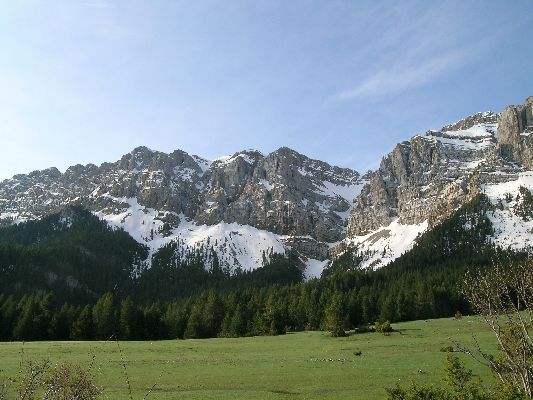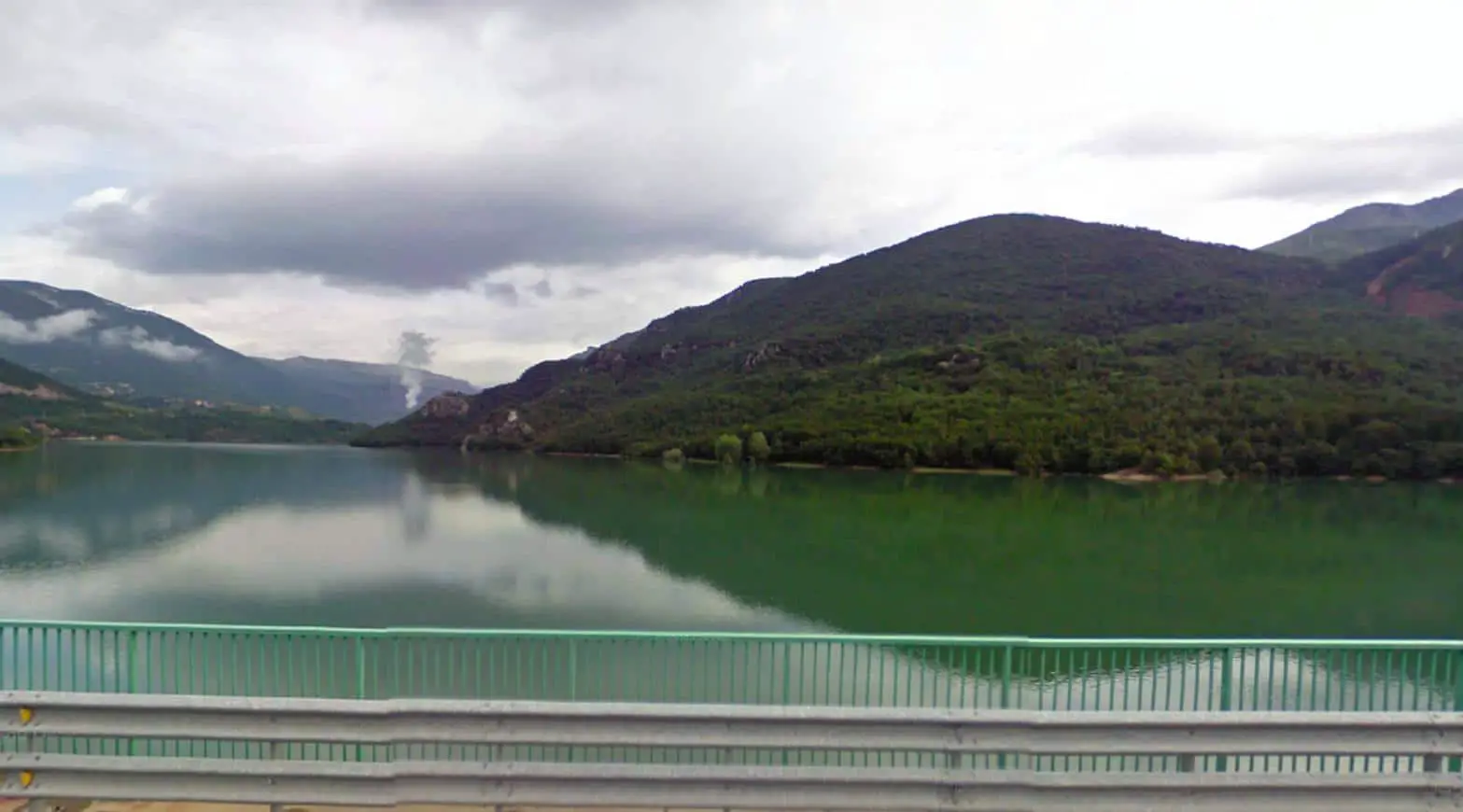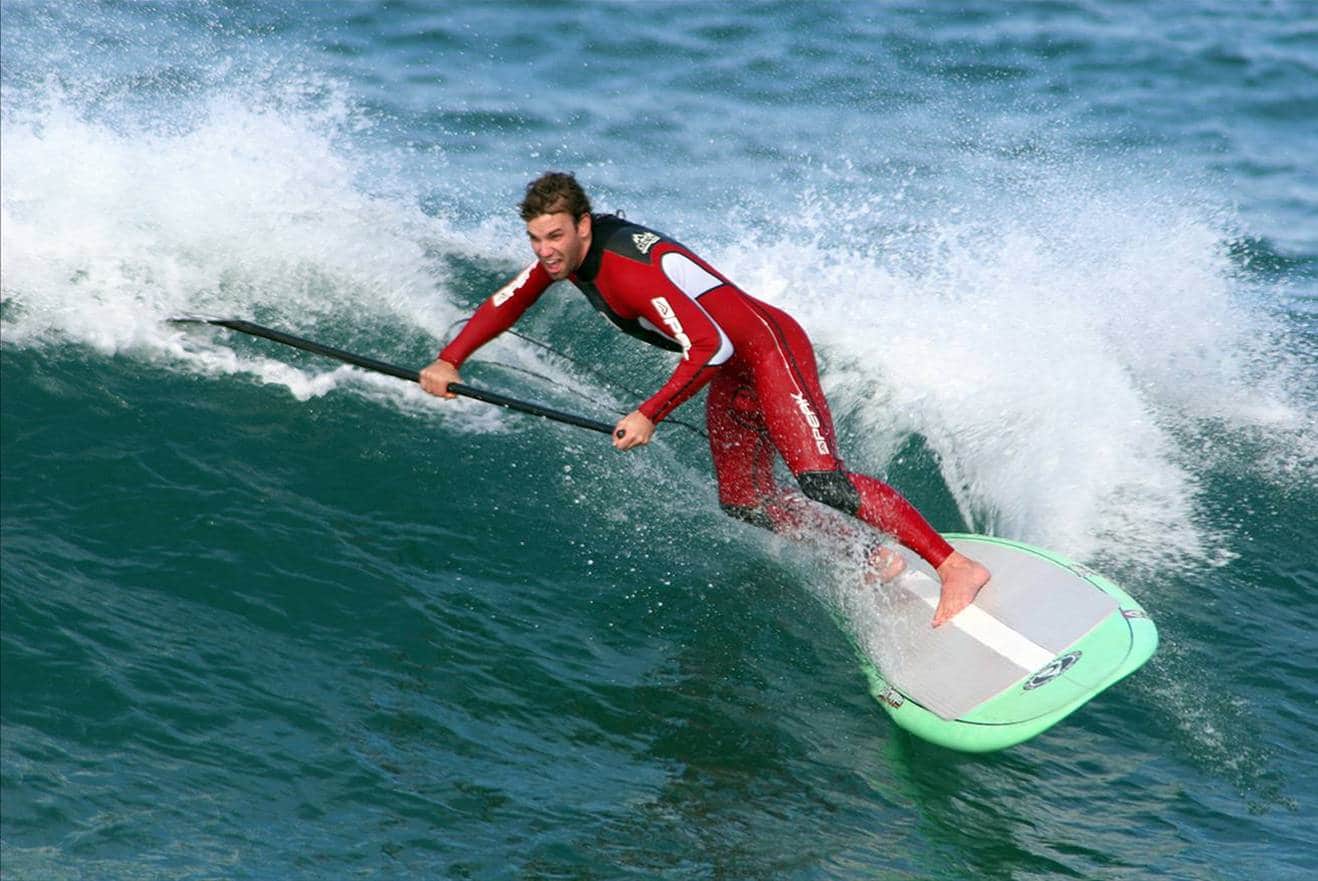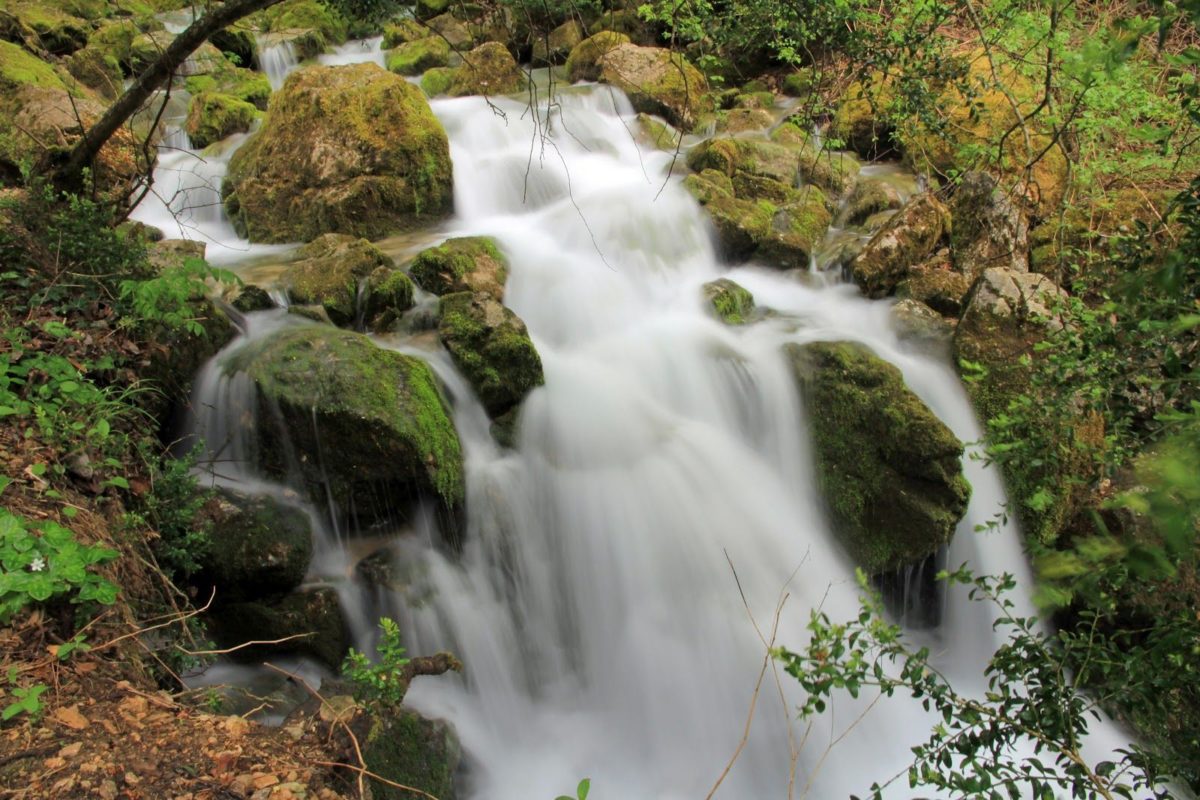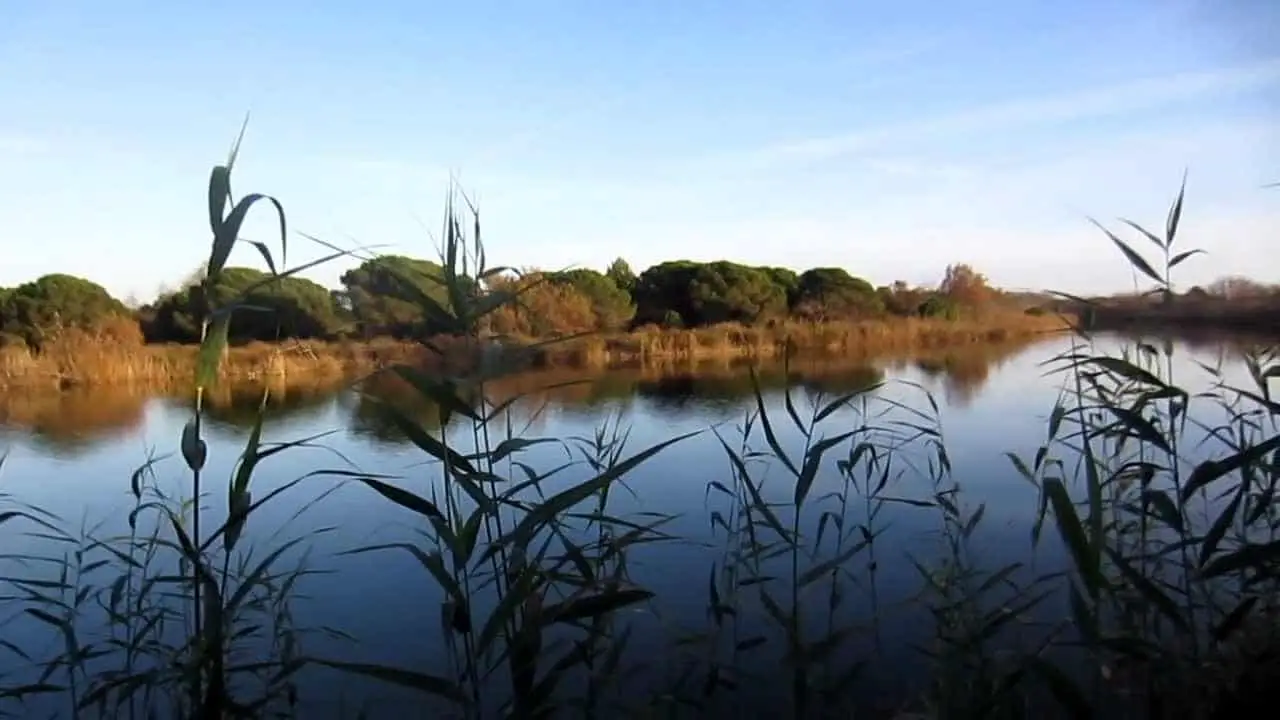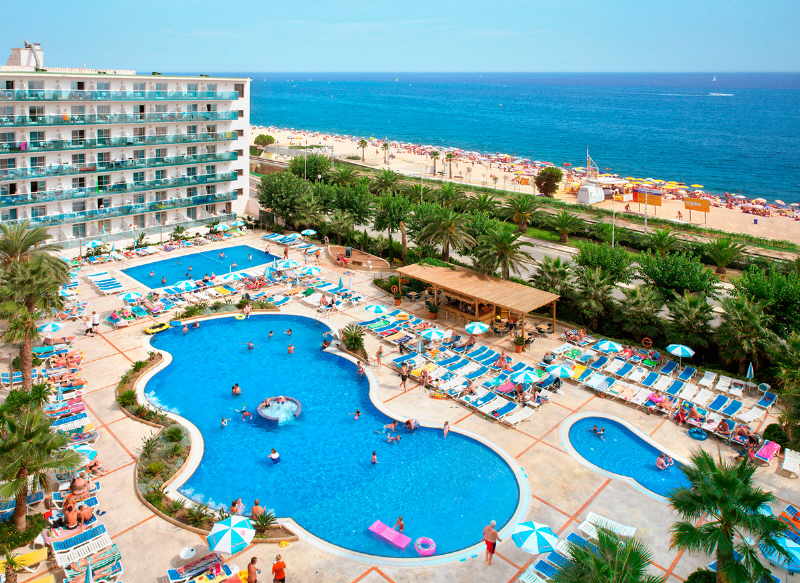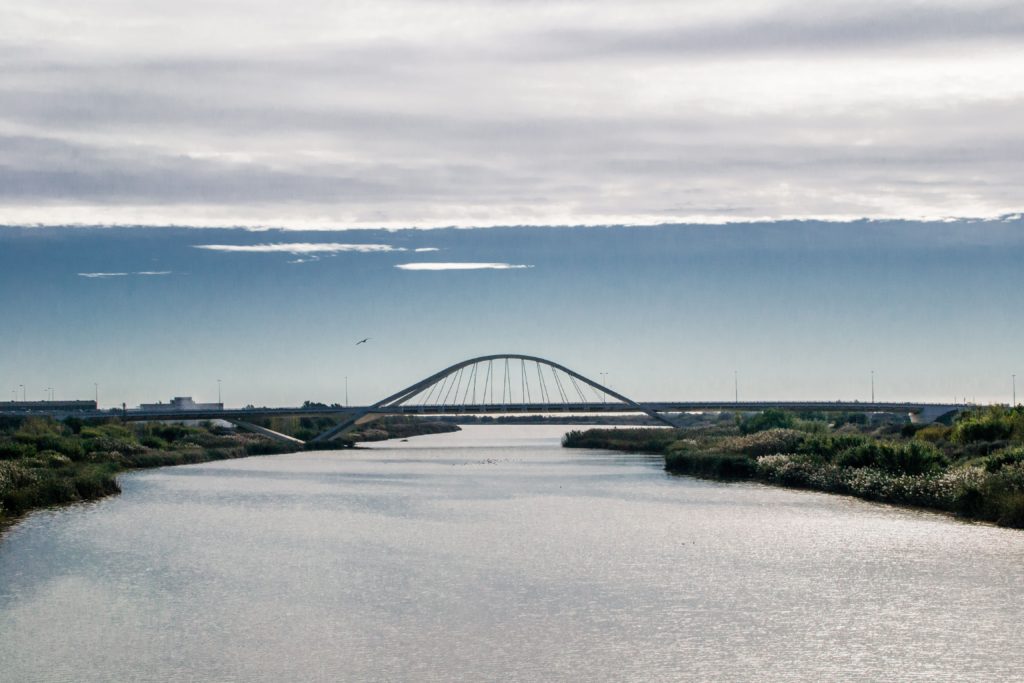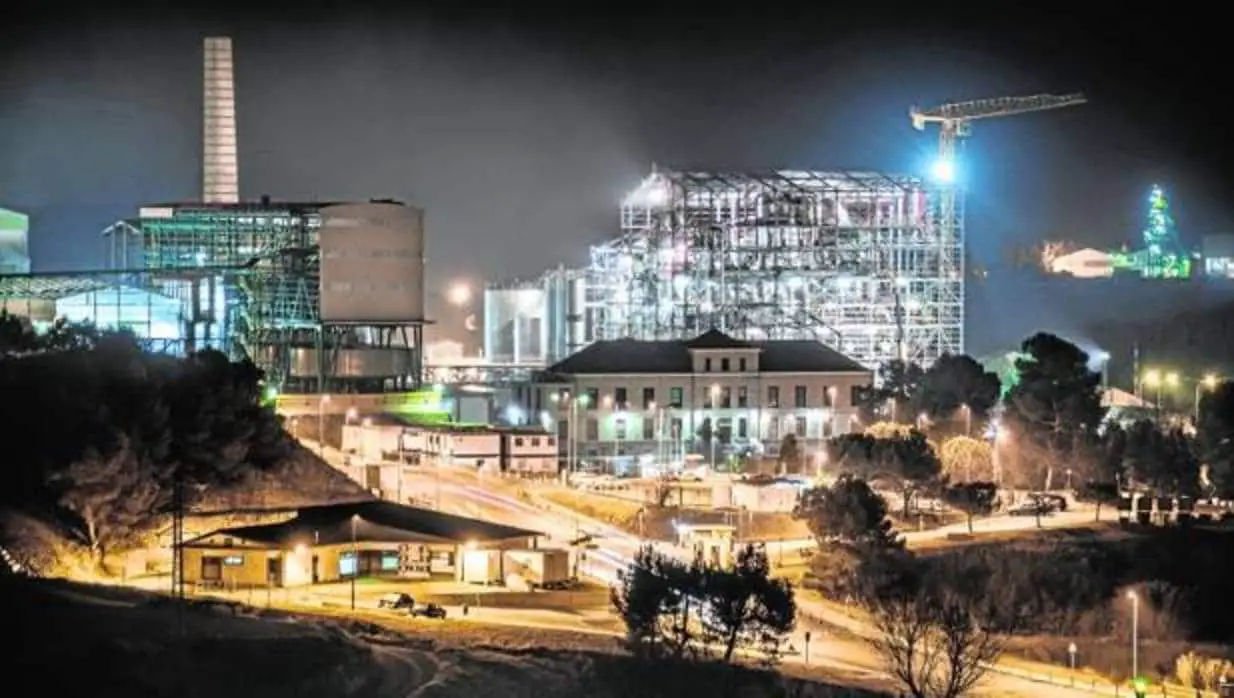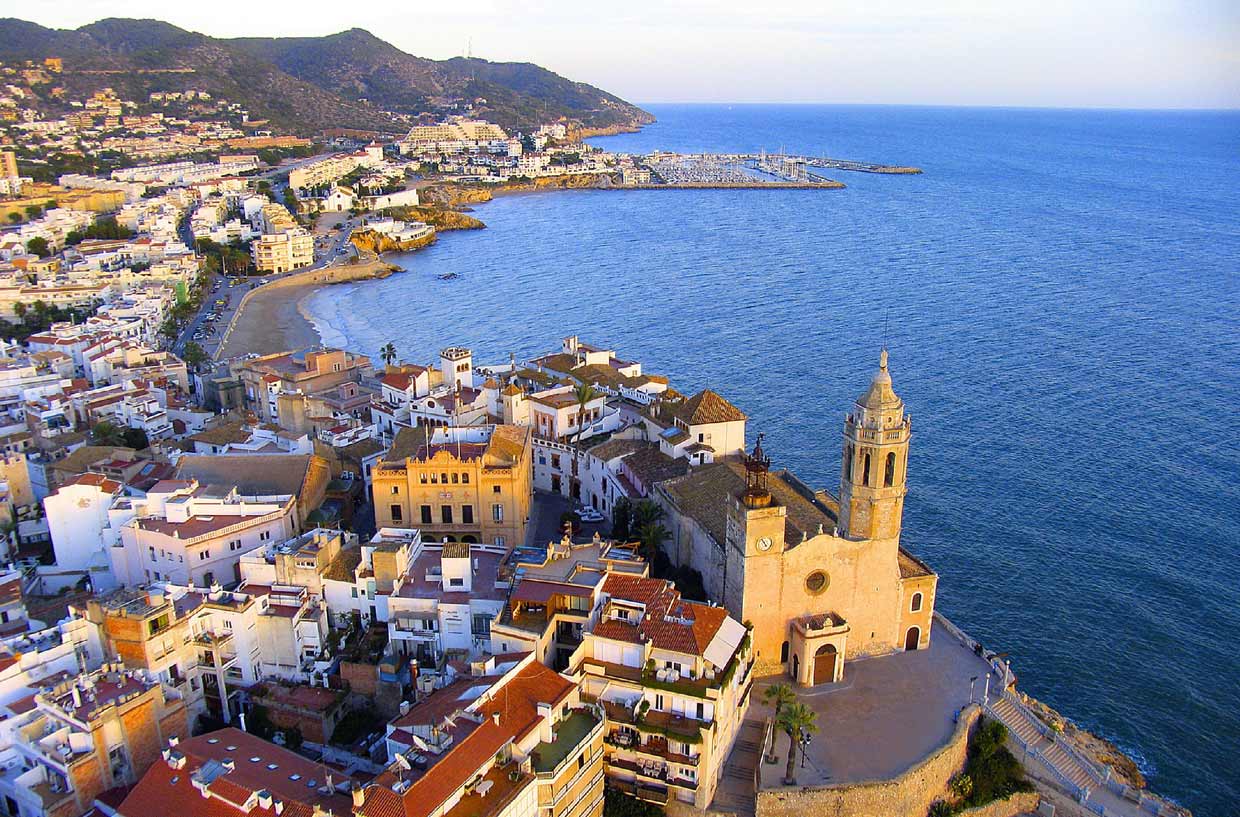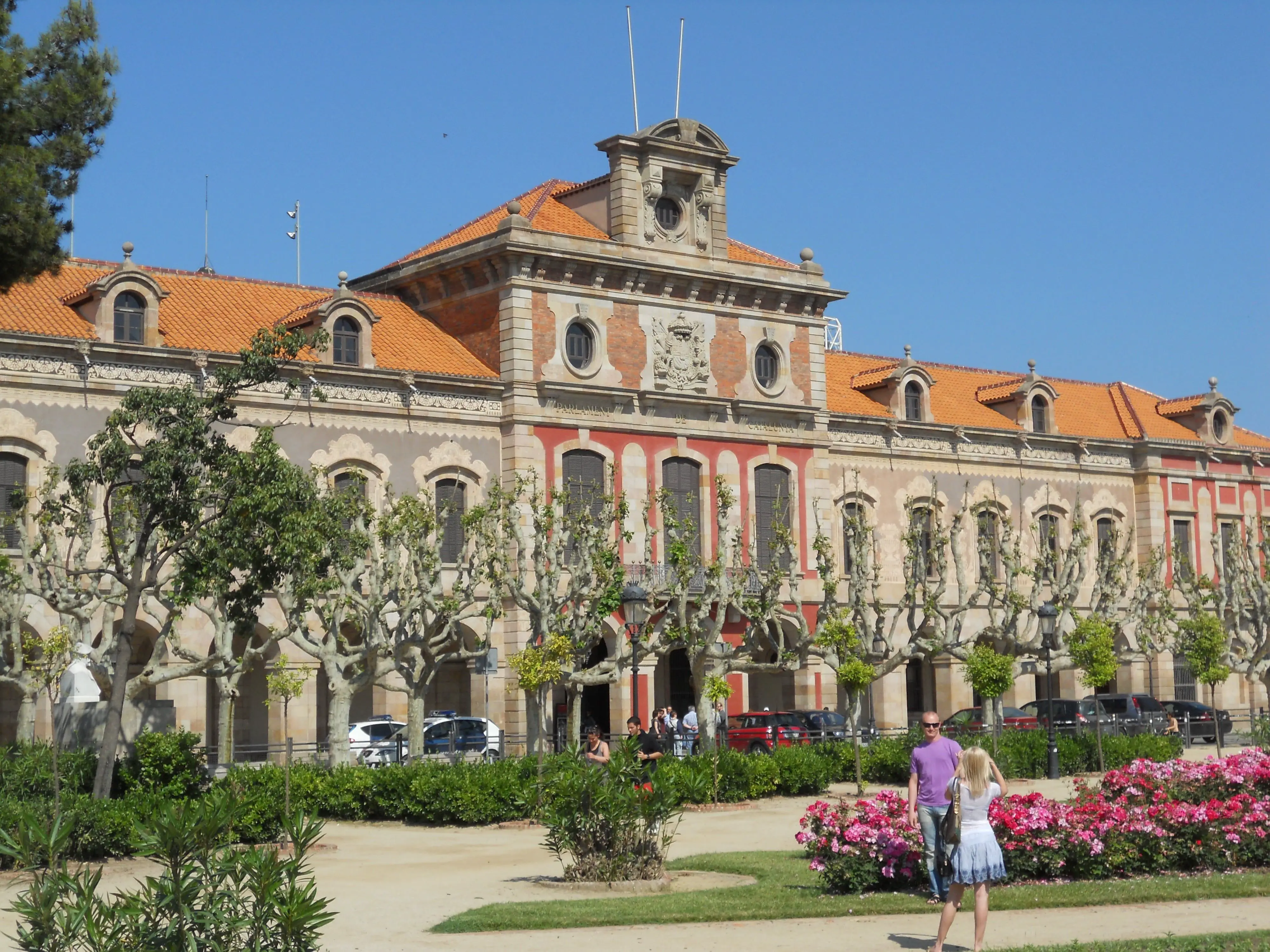The river Llobregat is located in the autonomous community of Catalonia, Spain. It stretches for just over 170 kilometres and its basin covers 4,948 square kilometres. It is said that its name comes from the Latin word “rubricatu”, which means red, and that its origin is Castilian, which comes from “lóbrego”, due to the gloomy appearance of its riverbed, because its position means that it receives little sunlight during the day.
Indice De Contenido
Source, course and mouth
To find out where the River Llobregat originates, we need to know that it has a mountainous origin, at an altitude of 1,259 metres, the River Llobregat rises and flows down the Sierra del Cadi mountain range until it reaches the Mediterranean Sea (see: River Tinto Huelva).
Source and origin
The Cadi mountain range is part of the Cadí-Moixeró Natural Park in Catalonia and is one of the four volcanic basins and calderas of the Catalan Pyrenees. In its springs there are calcareous or spongy rocks that penetrate the natural source of its waters. In spring, its waterfalls are spectacular (see: River Garonne).
The vegetation is rich, with red pines and oaks, firs and beeches in the wettest areas. Species that have adapted to the marshes are characteristic of this area, making it unique.
Map of the Llobregat basin
The location and course of the River Llobregat can be seen on the map of the River Llobregat below.
Route of the river Llobregat
With regard to the course of the River Llobregat, we can mention that on the right bank of the River Llobregat there are two important tributaries, the Rivers Cardener and Anoia; on the left bank there are the Rivers Arija, Mergancol, Cornet and Calders. In its basin there are three reservoirs: Baells, Llosa de Cavalls and Sant Ponc on the Cardener. It has a high population density in its 4,948 square kilometres.
La Baells reservoir.
It was built in 1976 to control the waters of the upper basin of the river Llobregat, to supply drinking water to the metropolitan area of Barcelona and to generate electricity.
Llosa del Cavall reservoir
Also known as Losa del Caballo, it is located on the River Cardener in Catalonia, a tributary of the River Llobregat; it is a wooded area with very little population. It is not yet at 100% capacity, although the infrastructure is in place.
Sant Ponc reservoir
Also on the River Cardener, in Catalonia, it produces electricity and supplies water to the inhabitants of the basin between the rivers Cardener and Llobregat. Lovers of water sports such as rowing, sailing, kayaking, windsurfing, canoeing and others can enjoy its waters (see: River Goascorán).
The estuary
The river Llobregat flows into or ends its course in El Prat de Llobregat, a municipality or district, as it is called there, located in the delta of the same river and on the shores of the Mediterranean Sea, a natural jewel.
It was a purely agricultural area until it began to industrialise and became an important industrial centre. It is famous for its lettuce, melons and artichokes (see: Manzanares River).
Tributaries of the river Llobregat
The river is largely canalised to avoid the serious and regrettable floods that occurred a few years ago. The main tributaries are
River Cardener
It joins the Llobregat after 106 km from its source in the Sierra del Cadi. The most important points along its course are the Llosa del Cavall and Sant Ponc reservoirs, powerful dams that supply hydroelectric energy to a large part of the population.
On its way it passes through several towns in Catalonia and Barcelona, such as Solsona and Olius (Catalonia), Cardona and Suria (Barcelona), among others. There are some fountains or waterfalls of great beauty and sound.
River Noya
Anoia in Catalan, it flows into the river Llobregat in the municipality of Martorell. It is 68 kilometres long. The region of the same name is mainly industrial.
Llobregat River Delta
The Llobregat river delta occupies 98 square kilometres of plain between the Garraf and Montjuic massifs; it is an area with a large number of animal species, including birds, since it is an obligatory passage for migratory birds between the Mediterranean, Europe and Africa.
The fauna
There are more than 360 species of birds that nest, rest or spend the winter here, the most notable being waterfowl such as the grey heron, ducks, cormorants and kingfishers. Owls are common and the scops owl has its seasons. In winter, hawks and even kestrels and red-breasted hawks visit (see: Rio Sumpul).
Flora
Pinyon pines and interdunal reedbeds are found here, providing a home for forest birds. The cultivated areas and groves, together with the mild and humid climate, attract birds from all over the world. Along the front of the delta there is a process of salinisation as seawater infiltrates the ponds, making the marshes slightly brackish and varying the species living there.
Economic importance
The Llobregat delta is still an important agricultural area, second only to the Segre. Its most famous crops are artichokes, tomatoes and lettuce. However, it should be noted that its economy is diversifying (see: Iguazu River).
Tourism
Since around 2012, the tourism sector in Baix Llobregat, Catalonia, has been growing. The hotel and commercial infrastructure has developed in an interesting way and has been profitable, since it is estimated that the economic income of the region has already given a juicy percentage, 10%, and something more interesting, comes from France, Germany, United States and Russia.
Agriculture
The Baix Llobregat is located in the delta, in the alluvial plains and in the lower part of the basin. This is where the Baix Llobregat Agricultural Park is located, a natural space protected by the Diputació de Barcelona. Fourteen provinces or municipalities belong to this park, which is rich in agricultural products and covers almost 2,938 hectares.
It is divided into two areas, 63% of which is devoted to vegetables and the rest to fruit trees. Livestock is also typical of this area, with sheep being the most important. In the lower basin, cherry trees predominate in the mountains and plum, apple, peach and pear trees in the plains. (See: Tárcoles River)
Wine growing
Another advantage of this river is that it irrigates the vines of the Pla de Bages, a geographical area in Bages with terraced dry-stone vineyards. Despite its small size, it was one of the most important wine regions in central Catalonia. It was one of its main economic activities until the 19th century.
[The most famous wines in Spain are red, fruity, white, Garnacha, Rancio and Muscat. White wine is mainly produced in Alella, Penedés and Tarragona, and red wine in the rest of the country. They are better known outside the country than inside[/su_note].Activities on the river Llobregat
Apart from its intense industrial activity, the river in Catalonia is favourable to other recreational and ecological activities. The most important of these is hydroelectric power generation, which provides the region with vital water for consumption; see the details of the hydroelectric dams at the beginning of this article.
Angling
Between the months of March and October, anglers can be found in the sectors of the river basin that have the greatest variety of fish, enjoying trout, chub, barbel, carp, among others (see: Uribante River).
Extreme sports
Near the town of L’Hospitalet in Barcelona there is an atmosphere of sporting festivity when tourists and visitors from the area come to see the lovers of canyoning, diving, sailing, water skiing, jet skiing, canoeing, rafting, zip lining, bungee jumping, surfing, scuba diving, fishing, ballooning, horse riding, boating, hiking, performing their stunts and juggling to the delight of many. (See: Maipo River).
Bridges and viaducts
Bridges and viaducts are part of the infrastructure of progressive cities, connecting populations for recreational, commercial and strategic purposes.
- The San Baudilio viaduct, 870 metres long, is part of the Madrid-Zaragoza-Barcelona-French border high-speed line, the first of the Madrid-Barcelona high-speed line, and crosses the River Llobregat, the Agricultural Park, until it reaches Prat de Llobregat.
- Devil’s Bridge or Pont del Diable, in Catalan. It is located between Castellbisbal and Martorell, over the river Llobregat, and is 130 metres long. There is a story or legend about its construction which tells of a little old lady who no longer had the strength to cross the river from bank to bank and one day the devil appeared to her and offered her a bridge in exchange for the soul of the first person to cross it; the little old lady accepted and when she went to cross for the first time, she let go of a cat she was carrying in a basket and it flew up the bridge, so the devil had to settle for her soul.
- The Nelson Mandela Bridge, formerly known as the Pratenc Polygon Bridge, was inaugurated in 2015 and named after the famous South African politician in 2016. It runs from the port to Barcelona Airport. It is 304 metres long and 29 metres wide (See: Orange River)
Threats to the river Llobregat
Hydroelectric power stations, domestic and industrial pollution, leftover medicines, fertilisers, etc. are always the predators of rivers, but here in the Llobregat there is another one: the salinity of the water.
Salinity
A high concentration of salt has been detected in the waters of the Llobregat, which comes from the mines of Bages, a region of Catalonia where a large salt and potash industry is developing and where there are plans to install two more plants with a capacity of 1.5 million tonnes per year. The plants at Súria, Sallent and Cogulló are extremely harmful to the general ecosystem.
Medicines or drugs
From anti-inflammatories to antibiotics, antidepressants, aspirin and painkillers, studies have shown that they are seriously polluting the waters of the Llobregat and affecting the habitat of certain small autochthonous species.
It is estimated that Spain ranks seventh in the world in terms of pharmaceutical consumption, a situation that is aggravated by the fact that Spain is a country of “hospital tourism”, meaning that patients from all over the world come to the country for treatment. (See: The Danube).
Urban planning
The high concentration of people in the river basin is another factor in the increasingly widespread and dangerous pollution of the almost two million people served by the river, with faecal waste and salt mine waste being among the main causes. The industrial boom has led to an increase in urban sprawl and serious environmental problems (see: Chamelecon River).
Nearly 42% of the pollution discharged into the Mediterranean Sea comes from Catalonia, where industrial development is on the rise, a sign of progress and well-being for its inhabitants, but also of more toxic chemical waste (see: Rio Bogotá).
Man has been and still is one of the main predators of the environment, intentionally or not, but the serious damage and consequences are increasingly costly for the life of the planet, forests are dying, rivers, the oxygen we breathe, the water we consume, vital elements that we are destroying with our wrong behaviour by throwing waste into rivers, sewage…
They have tackled the problem and invested at least ten million euros to clean up the coast a little, although this is nothing compared to the huge investment in coastal infrastructure such as buildings, hotels, industries and others.
Floods and floods
In the recent history of Spain, two events related to the river Llobregat stand out, in 1962 and 1971. They were devastating floods for the regions affected. There were deaths, injuries, millions of euros of damage to infrastructure, crop losses and other serious consequences that no one wants to remember.
In Barcelona, on 25 September 1962, a gentle rain fell for which the inhabitants were grateful, as they had been suffering from a severe drought for several months, which had caused a loss of crops; in less than three hours, this “gentle rain” had turned small streams and brooks into seas that swept away everything in their path.
This episode exposed large areas populated by Andalusian immigrants who came to Catalonia in search of a better life, willing to work in the textile factories, especially in Rubí and Tarrasa, where more than 600 people were killed, another number disappeared, injured and a lot of material damage. The rivers Besos and Llobregat burst their banks, cutting off electricity and communications.
Almost a decade later, in 1971, also in September, on the 20th, it rained heavily in almost all of Catalonia and Aragon. There were four days of heavy downpours that caused the level of the Llobregat River to rise twelve (12) metres above its normal level. This flood was considered to be much higher than that of 1962 and caused 21 deaths, most of them in Barcelona, and millions in damage. (See: River Ebro).
Possible causes
Among the causes that led to these tragedies are 1) the lack of canalisation of the river; 2) the reduction of the embankment on the Martorell motorway; 3) bridges in poor condition that collapsed with the flow of the river; 4) the lack of control and dredging of the river; and 5) the lack of an alarm system to warn in time of the flooding of the river (See: River Tuy).
History of Catalonia
In order to better understand the region where the Llobregat River is located, let’s take a look at some important and historical facts about the host city.
Autonomous Community
It is defined as a Spanish autonomous community with historical nationality, that is, with its own identity and distinct from the rest of the country in which it is located, in terms of language, culture, ethnicity, its idiosyncrasies; this concept also includes the communities of Andalusia, Aragon, the Canary Islands, the Valencian Community, the Basque Country, the Balearic Islands and Galicia (see: River Minho).
[It is not known exactly whether Catalonia has always been autonomous or independent. What some historians do say is that in the Middle Ages, under the Crown of Aragon, the Principality of Catalonia was independent, with its own administrative, political and judicial system and its own commercial code, which was even imitated by the populations of the Mediterranean.Independence referendum
Today, in October 2007, the alarm has been raised once again by the desire of some Catalan Spaniards to separate these lands from the Spanish government. On 1 October, a referendum was held to decide whether Catalonia should separate from Spain or become independent, and was won by a majority in parliament.
The Catalan parliament approved the independence process, but the Spanish president, Mariano Rajoy, called for a constitutional decree, specifically 155, to stop the Catalan ambition. Among the reasons for secession, the Catalans claim that they are a very different entity from the Spanish and that their cultural customs make them alien to the essence of the Spanish.
On the other hand, Catalonia’s economic growth has skyrocketed and it wants to maintain it, but as a member or part of the Spanish state it has to share its income with the rest of the Spanish regions and this is detrimental to achieving this. Therefore, there is still a lot of work to be done on this issue, which is not new, it has been going on for many years and there is no way out that will benefit either side.
Hospitalet
This town is located in the province of Barcelona, a few kilometres from the centre of the autonomous community of Catalonia. It was an agricultural town until the end of the 18th century, when industrial activity and population growth began. In 1933 it ceded part of its territory, 50 hectares, to Barcelona by municipal agreement, in return for certain services provided by Hospitalet.
The Llobregat River runs along its left side, and it is one of the most densely populated areas in Spain; this growth was caused by a wave of immigration in the 60s and 70s, people who came from other parts of Spain. This meant that in the 1980s many buildings and facilities had to be modified and built to accommodate the population growth.
The city’s importance grew and led to the modernisation of its spaces. The Plaza de Europa was built, which is an icon of the modernity of the buildings designed and built by famous architects such as Toyó Itó and engineers recognised worldwide for their great works (see: Guadalquivir River)
Parks in Barcelona
Barcelona has many natural spaces for children and adults to enjoy, where they can spend an afternoon picnicking, running, walking, cycling and much more. Here are at least ten of the most attractive.
- Montjuic Parks. Mountain type. Ideal for cycling.
- Park Güell. The most famous park in Barcelona, the inspiration of artists, poets and film directors.
- Cervantes Park. It is a garden of infinite natural beauty, with the rose trees standing out.
- Horta Labyrinth Gardens. With a labyrinth that will delight young and old alike. Surrounded by lush vegetation.
- Joan Miró Park. Right in the centre of Barcelona. It has different sections to suit the tastes of its visitors. It has a library, a cable car area, a bicycle area and terraces.
- Grec Gardens or Grec Theatre Gardens. As its name suggests, it has an amphitheatre for shows, a gazebo, flower gardens and other areas for all the family to enjoy.
- Diagonal Mar Giant Slide Park. It has a lake around which you can swim. Its main attractions are the slides and the walk along the beach.
- Eina Park. A kind of garden. Playground, paths, bar terrace and more.
- La Tamarita Gardens. It has two areas, one for strolling and decorated with beautiful gardens and the other for children of all ages.
- Villa Cecilia and Santa Amelia. It has ping pong tables, basketball courts, gardens, playground
Fairs and events
There is not only leisure, historical, rural and ecological tourism. Barcelona has large and privileged facilities for holding events and concerts, business fairs and large-scale exhibitions.
Barcelona Trade Fair Centre
It was built in 1932. It receives visitors from over 200 countries. It has two venues, Montjuic and Gran Via, with more than 70 exhibition and meeting rooms.
Catalonia Conference Centre
Contemporary architectural jewel inaugurated in 2001. It has 39 rooms and a main auditorium with more than 2,000 seats. It hosts social events, gala concerts and national and international congresses.
World Trade Centre
With 4,000 square metres of high-tech spaces and enviable sea views, it is a popular venue for romantic dinners, open-air concerts, business meetings or any social or cultural event.
Sant Jordi Palace
Built in 1992 for the Olympic Games, it is another luxurious work of architecture. Its facilities are suitable for musical, family, corporate and, of course, top-level sporting events.
Gran Vía de Feria de Barcelona
One of the largest fairgrounds in Europe. It covers an area of 240,000 square metres and houses eight pavilions, a walkway, a heliport with two runways, more than 40 restaurants and a photovoltaic park considered to be one of the largest and most modern in the world.
Miscellaneous
- Hospitalet produces fruity wines such as Merlot, Sumoll, Tempranillo and Cavernet Sauvignon, which are much sought after by wine lovers.
- More than two hundred parishioners who were in the church of San Pedro disappeared in the fateful flood of Catalonia in 1962.
- The entire harvest of the Llobregat river delta was lost and 450 industries were severely damaged. The damage was estimated at more than 7 billion pesetas.
- In the second half of 2018, the “Vies Blaves” project will begin, which consists of the construction of a pedestrian and cycle path that will follow the course of the river for more than 300 kilometres, from its source to its culmination in El Prat de Llobregat.
- The park, the Colònia and the Güell Palace, Casa Milà, Casa Vicens and Casa Batlló were declared World Heritage Sites in 2005. Its author is Antonio Gaudí.
- The last bridge at the mouth of the river is the Nelson Mandela Bridge, 304 metres long and 29 metres wide. It was inaugurated in April 2015.


